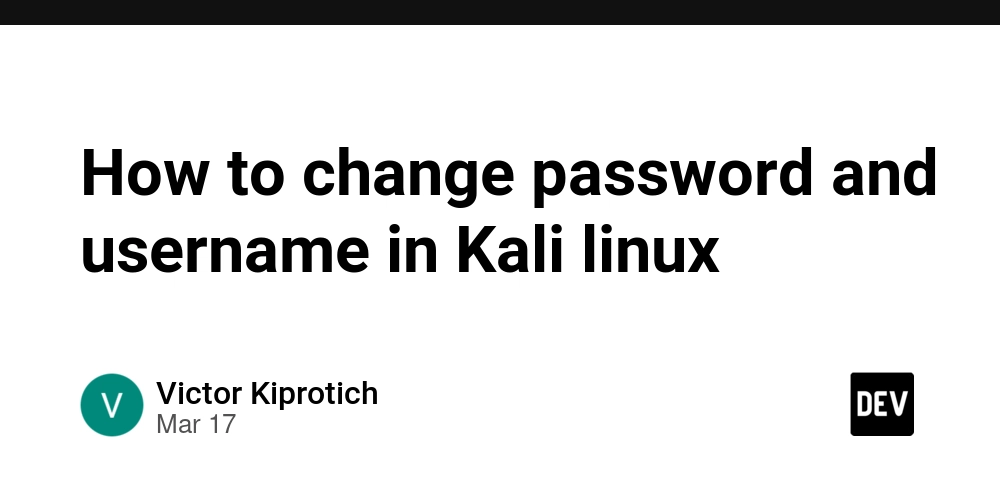Clojure Is Awesome!!! [PART 17]
Adapting the DTO Pattern to Functional Bliss Welcome back to Clojure Is Awesome! In Part 17, we’re crossing the bridge from the object-oriented world to functional territory by adapting the DTO (Data Transfer Object) pattern—a staple in Java/Spring Boot projects. DTOs are all about moving data between layers or systems, and while they’re typically tied to mutable classes in OOP, we’ll reimagine them in Clojure with immutability, specs, and pure functions. What is the DTO Pattern, and Why Does It Matter? In Java/Spring Boot, a Data Transfer Object (DTO) is a simple class designed to carry data between layers (e.g., from a database to a REST API) or across system boundaries. It’s not about business logic—just a lightweight container for structured data. A typical Java DTO might look like this: public class UserDTO { private String id; private String name; private boolean active; // Getters, setters, constructors... public UserDTO(String id, String name, boolean active) { this.id = id; this.name = name; this.active = active; } } Why DTOs exist: Decoupling: They separate internal models (e.g., database entities) from external representations (e.g., API responses). Efficiency: They expose only what’s needed, trimming unnecessary fields. Safety: They enforce a clear contract for data exchange. In Clojure, we don’t have classes or mutable state—so how do we adapt this? The answer lies in immutable maps, clojure.spec for validation, and pure functions for transformation. Let’s build a functional DTO that keeps the spirit alive! Crafting a Functional DTO in Clojure In Clojure, a DTO can be a plain map with a well-defined shape, validated by specs, and paired with transformation functions. We’ll create a UserDTO equivalent, along with utilities to convert between internal data and DTOs—mimicking a real-world scenario like a REST API response. Here’s the implementation: (ns clojure-is-awesome.dto (:require [clojure.spec.alpha :as s] [clojure.pprint :as pp])) (s/def ::id string?) (s/def ::name string?) (s/def ::active boolean?) (s/def ::user-dto (s/keys :req-un [::id ::name ::active])) (s/def ::created-at inst?) (s/def ::user-entity (s/keys :req-un [::id ::name ::active ::created-at])) (defn entity->dto "Converts an internal user entity to a DTO. Args: entity - A map representing the internal user entity. Returns: A map conforming to ::user-dto, or throws an exception if invalid." [entity] (if (s/valid? ::user-entity entity) (select-keys entity [:id :name :active]) (throw (ex-info "Invalid user entity" {:problems (s/explain-data ::user-entity entity)})))) (defn dto->entity "Converts a DTO to an internal user entity, adding default fields. Args: dto - A map conforming to ::user-dto. Returns: A map conforming to ::user-entity, or throws an exception if invalid." [dto] (if (s/valid? ::user-dto dto) (assoc dto :created-at (java.util.Date.)) (throw (ex-info "Invalid DTO" {:problems (s/explain-data ::user-dto dto)})))) (defn valid-dto? "Checks if a map is a valid user DTO. Args: dto - A map to validate. Returns: Boolean indicating validity." [dto] (s/valid? ::user-dto dto)) Testing with Pretty-Printed Output Let’s simulate a round-trip from entity to DTO and back, with pprint for clarity: (def user-entity {:id "u123" :name "Borba" :active true :created-at (java.util.Date.)}) (def user-dto (entity->dto user-entity)) (println "User DTO:") (pp/pprint user-dto) (println "Valid DTO?" (valid-dto? user-dto)) (def new-entity (dto->entity user-dto)) (println "New Entity:") (pp/pprint new-entity) (try (dto->entity {:id "u124" :name "Borba"}) (catch Exception e (println "Error:") (pp/pprint (ex-data e)))) Practical Use Case: REST API Response Imagine a web service returning user data. We’ll convert an internal entity to a DTO for the API response: (defn fetch-user-dto "Simulates fetching a user and returning its DTO representation. Args: user-id - The ID of the user to fetch. Returns: A user DTO map." [user-id] (let [mock-db {:u123 {:id "u123" :name "Borba" :active true :created-at (java.util.Date.)}}] (entity->dto (get mock-db user-id)))) (def api-response (fetch-user-dto :u123)) (println "API Response:") (pp/pprint api-response) (def incoming-dto {:id "u124" :name "Bob" :active false}) (def stored-entity (dto->entity incoming-dto)) (println "Stored Entity:") (pp/pprint stored-entity) Why This Matters in Clojure Our functional DTO brings some serious advantages over its Java cousin: Immutability: No setters, no surprises—data stays consistent. Validation: Specs enforce structure upfront, catching
![Clojure Is Awesome!!! [PART 17]](https://media2.dev.to/dynamic/image/width%3D1000,height%3D500,fit%3Dcover,gravity%3Dauto,format%3Dauto/https:%2F%2Fdev-to-uploads.s3.amazonaws.com%2Fuploads%2Farticles%2Foic1e4ui2sl5eiecdomx.jpg)
Adapting the DTO Pattern to Functional Bliss
Welcome back to Clojure Is Awesome! In Part 17, we’re crossing the bridge from the object-oriented world to functional territory by adapting the DTO (Data Transfer Object) pattern—a staple in Java/Spring Boot projects. DTOs are all about moving data between layers or systems, and while they’re typically tied to mutable classes in OOP, we’ll reimagine them in Clojure with immutability, specs, and pure functions.
What is the DTO Pattern, and Why Does It Matter?
In Java/Spring Boot, a Data Transfer Object (DTO) is a simple class designed to carry data between layers (e.g., from a database to a REST API) or across system boundaries. It’s not about business logic—just a lightweight container for structured data. A typical Java DTO might look like this:
public class UserDTO {
private String id;
private String name;
private boolean active;
// Getters, setters, constructors...
public UserDTO(String id, String name, boolean active) {
this.id = id;
this.name = name;
this.active = active;
}
}
Why DTOs exist:
- Decoupling: They separate internal models (e.g., database entities) from external representations (e.g., API responses).
- Efficiency: They expose only what’s needed, trimming unnecessary fields.
- Safety: They enforce a clear contract for data exchange.
In Clojure, we don’t have classes or mutable state—so how do we adapt this? The answer lies in immutable maps, clojure.spec for validation, and pure functions for transformation. Let’s build a functional DTO that keeps the spirit alive!
Crafting a Functional DTO in Clojure
In Clojure, a DTO can be a plain map with a well-defined shape, validated by specs, and paired with transformation functions. We’ll create a UserDTO equivalent, along with utilities to convert between internal data and DTOs—mimicking a real-world scenario like a REST API response.
Here’s the implementation:
(ns clojure-is-awesome.dto
(:require [clojure.spec.alpha :as s]
[clojure.pprint :as pp]))
(s/def ::id string?)
(s/def ::name string?)
(s/def ::active boolean?)
(s/def ::user-dto (s/keys :req-un [::id ::name ::active]))
(s/def ::created-at inst?)
(s/def ::user-entity (s/keys :req-un [::id ::name ::active ::created-at]))
(defn entity->dto
"Converts an internal user entity to a DTO.
Args:
entity - A map representing the internal user entity.
Returns:
A map conforming to ::user-dto, or throws an exception if invalid."
[entity]
(if (s/valid? ::user-entity entity)
(select-keys entity [:id :name :active])
(throw (ex-info "Invalid user entity" {:problems (s/explain-data ::user-entity entity)}))))
(defn dto->entity
"Converts a DTO to an internal user entity, adding default fields.
Args:
dto - A map conforming to ::user-dto.
Returns:
A map conforming to ::user-entity, or throws an exception if invalid."
[dto]
(if (s/valid? ::user-dto dto)
(assoc dto :created-at (java.util.Date.))
(throw (ex-info "Invalid DTO" {:problems (s/explain-data ::user-dto dto)}))))
(defn valid-dto?
"Checks if a map is a valid user DTO.
Args:
dto - A map to validate.
Returns:
Boolean indicating validity."
[dto]
(s/valid? ::user-dto dto))
Testing with Pretty-Printed Output
Let’s simulate a round-trip from entity to DTO and back, with pprint for clarity:
(def user-entity {:id "u123"
:name "Borba"
:active true
:created-at (java.util.Date.)})
(def user-dto (entity->dto user-entity))
(println "User DTO:")
(pp/pprint user-dto)
(println "Valid DTO?" (valid-dto? user-dto))
(def new-entity (dto->entity user-dto))
(println "New Entity:")
(pp/pprint new-entity)
(try
(dto->entity {:id "u124" :name "Borba"})
(catch Exception e
(println "Error:")
(pp/pprint (ex-data e))))
Practical Use Case: REST API Response
Imagine a web service returning user data. We’ll convert an internal entity to a DTO for the API response:
(defn fetch-user-dto
"Simulates fetching a user and returning its DTO representation.
Args:
user-id - The ID of the user to fetch.
Returns:
A user DTO map."
[user-id]
(let [mock-db {:u123 {:id "u123"
:name "Borba"
:active true
:created-at (java.util.Date.)}}]
(entity->dto (get mock-db user-id))))
(def api-response (fetch-user-dto :u123))
(println "API Response:")
(pp/pprint api-response)
(def incoming-dto {:id "u124" :name "Bob" :active false})
(def stored-entity (dto->entity incoming-dto))
(println "Stored Entity:")
(pp/pprint stored-entity)
Why This Matters in Clojure
Our functional DTO brings some serious advantages over its Java cousin:
- Immutability: No setters, no surprises—data stays consistent.
- Validation: Specs enforce structure upfront, catching errors early.
- Simplicity: Maps and functions replace boilerplate classes and frameworks.
- Flexibility: Transformation functions can evolve without breaking the contract.
Unlike Java DTOs, we don’t need Lombok or Jackson for serialization—clojure’s data structures are naturally serializable (e.g., to JSON). It’s leaner, yet just as powerful.











































































































































































![[The AI Show Episode 142]: ChatGPT’s New Image Generator, Studio Ghibli Craze and Backlash, Gemini 2.5, OpenAI Academy, 4o Updates, Vibe Marketing & xAI Acquires X](https://www.marketingaiinstitute.com/hubfs/ep%20142%20cover.png)




























































































































![[DEALS] The Premium Learn to Code Certification Bundle (97% off) & Other Deals Up To 98% Off – Offers End Soon!](https://www.javacodegeeks.com/wp-content/uploads/2012/12/jcg-logo.jpg)


![From drop-out to software architect with Jason Lengstorf [Podcast #167]](https://cdn.hashnode.com/res/hashnode/image/upload/v1743796461357/f3d19cd7-e6f5-4d7c-8bfc-eb974bc8da68.png?#)








































































































.png?#)























.webp?#)










_Christophe_Coat_Alamy.jpg?#)
 (1).webp?#)




































































































![Apple Considers Delaying Smart Home Hub Until 2026 [Gurman]](https://www.iclarified.com/images/news/96946/96946/96946-640.jpg)
![iPhone 17 Pro Won't Feature Two-Toned Back [Gurman]](https://www.iclarified.com/images/news/96944/96944/96944-640.jpg)
![Tariffs Threaten Apple's $999 iPhone Price Point in the U.S. [Gurman]](https://www.iclarified.com/images/news/96943/96943/96943-640.jpg)



































































































































